Andrei Irimia
HDLCoRe: A Training-Free Framework for Mitigating Hallucinations in LLM-Generated HDL
Mar 18, 2025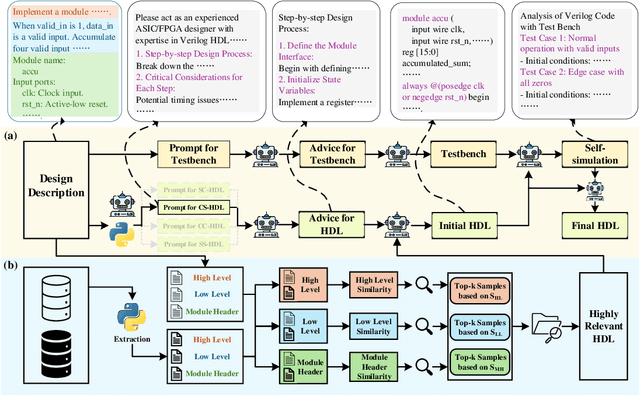



Abstract:Recent advances in large language models (LLMs) have demonstrated remarkable capabilities in code generation tasks. However, when applied to hardware description languages (HDL), these models exhibit significant limitations due to data scarcity, resulting in hallucinations and incorrect code generation. To address these challenges, we propose HDLCoRe, a training-free framework that enhances LLMs' HDL generation capabilities through prompt engineering techniques and retrieval-augmented generation (RAG). Our approach consists of two main components: (1) an HDL-aware Chain-of-Thought (CoT) prompting technique with self-verification that classifies tasks by complexity and type, incorporates domain-specific knowledge, and guides LLMs through step-by-step self-simulation for error correction; and (2) a two-stage heterogeneous RAG system that addresses formatting inconsistencies through key component extraction and efficiently retrieves relevant HDL examples through sequential filtering and re-ranking. HDLCoRe eliminates the need for model fine-tuning while substantially improving LLMs' HDL generation capabilities. Experimental results demonstrate that our framework achieves superior performance on the RTLLM2.0 benchmark, significantly reducing hallucinations and improving both syntactic and functional correctness.
ICML Topological Deep Learning Challenge 2024: Beyond the Graph Domain
Sep 08, 2024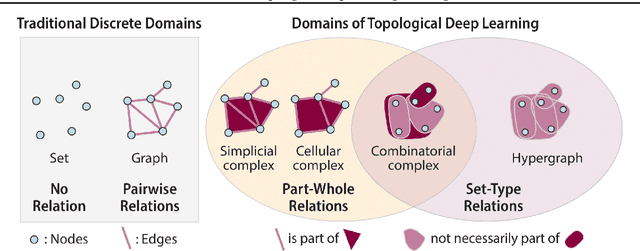
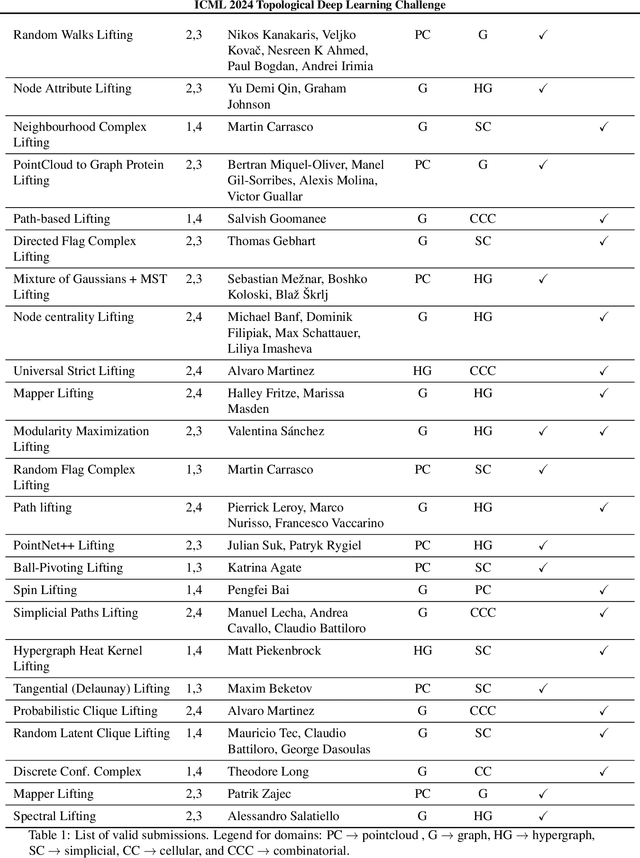
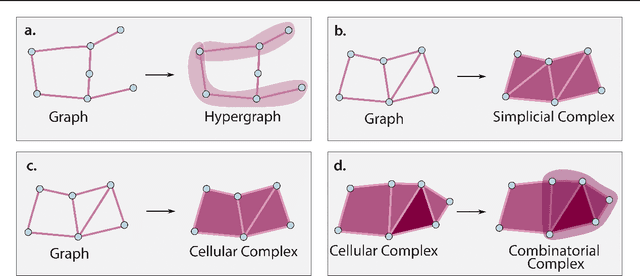
Abstract:This paper describes the 2nd edition of the ICML Topological Deep Learning Challenge that was hosted within the ICML 2024 ELLIS Workshop on Geometry-grounded Representation Learning and Generative Modeling (GRaM). The challenge focused on the problem of representing data in different discrete topological domains in order to bridge the gap between Topological Deep Learning (TDL) and other types of structured datasets (e.g. point clouds, graphs). Specifically, participants were asked to design and implement topological liftings, i.e. mappings between different data structures and topological domains --like hypergraphs, or simplicial/cell/combinatorial complexes. The challenge received 52 submissions satisfying all the requirements. This paper introduces the main scope of the challenge, and summarizes the main results and findings.
Leader-Follower Neural Networks with Local Error Signals Inspired by Complex Collectives
Oct 11, 2023Abstract:The collective behavior of a network with heterogeneous, resource-limited information processing units (e.g., group of fish, flock of birds, or network of neurons) demonstrates high self-organization and complexity. These emergent properties arise from simple interaction rules where certain individuals can exhibit leadership-like behavior and influence the collective activity of the group. Motivated by the intricacy of these collectives, we propose a neural network (NN) architecture inspired by the rules observed in nature's collective ensembles. This NN structure contains workers that encompass one or more information processing units (e.g., neurons, filters, layers, or blocks of layers). Workers are either leaders or followers, and we train a leader-follower neural network (LFNN) by leveraging local error signals and optionally incorporating backpropagation (BP) and global loss. We investigate worker behavior and evaluate LFNNs through extensive experimentation. Our LFNNs trained with local error signals achieve significantly lower error rates than previous BP-free algorithms on MNIST and CIFAR-10 and even surpass BP-enabled baselines. In the case of ImageNet, our LFNN-l demonstrates superior scalability and outperforms previous BP-free algorithms by a significant margin.
Linking Symptom Inventories using Semantic Textual Similarity
Sep 08, 2023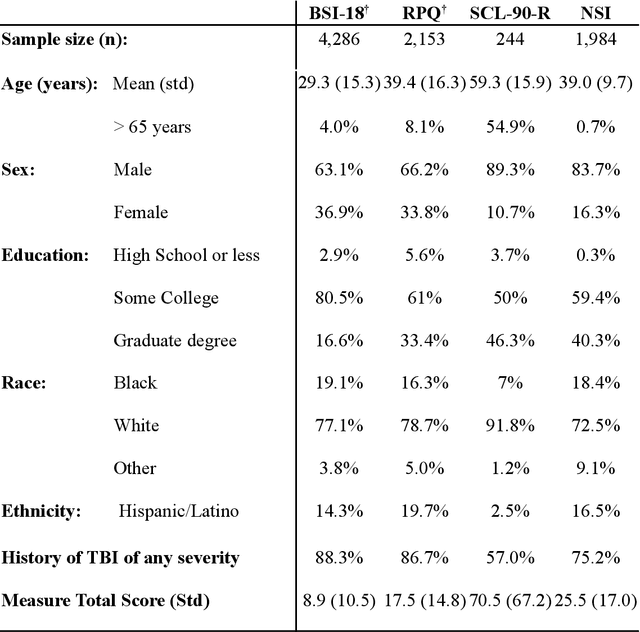
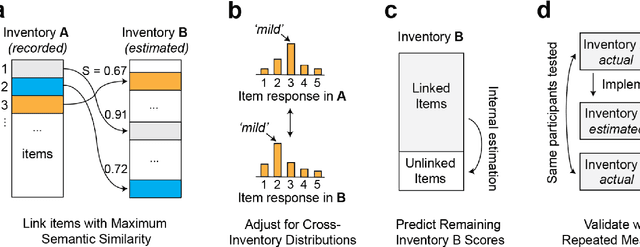
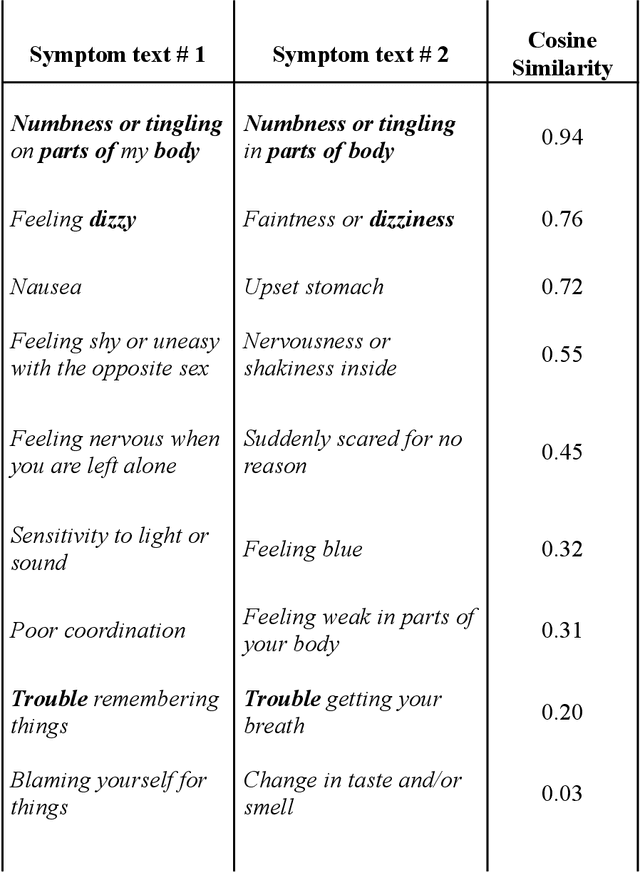
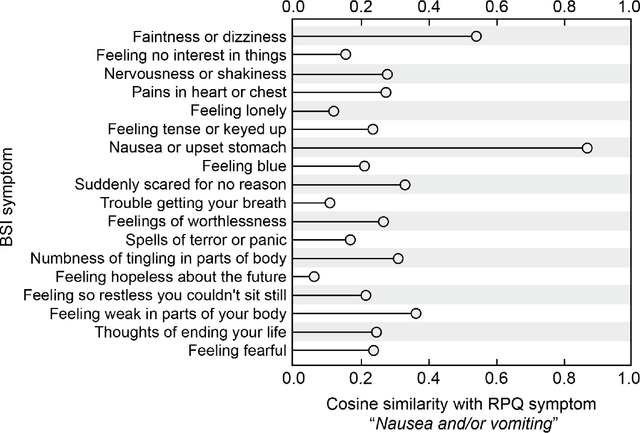
Abstract:An extensive library of symptom inventories has been developed over time to measure clinical symptoms, but this variety has led to several long standing issues. Most notably, results drawn from different settings and studies are not comparable, which limits reproducibility. Here, we present an artificial intelligence (AI) approach using semantic textual similarity (STS) to link symptoms and scores across previously incongruous symptom inventories. We tested the ability of four pre-trained STS models to screen thousands of symptom description pairs for related content - a challenging task typically requiring expert panels. Models were tasked to predict symptom severity across four different inventories for 6,607 participants drawn from 16 international data sources. The STS approach achieved 74.8% accuracy across five tasks, outperforming other models tested. This work suggests that incorporating contextual, semantic information can assist expert decision-making processes, yielding gains for both general and disease-specific clinical assessment.
 Add to Chrome
Add to Chrome Add to Firefox
Add to Firefox Add to Edge
Add to Edge